POCO X4 Pro 5G review: delivers on most aspects
Former Xiaomi sub-brand POCO has come a long way since declaring itself independent from its parent company. The POCO F1 (review) is imprinted as clear as day in my mind for bringing power-packed flagship specs at super affordable price points that even OnePlus couldn’t match. Since then the diversification of POCO’s portfolio of products has slightly muddled its initial strategy. Nonetheless, the company has continued to deliver on its mantra of a great price-to-performance ratio. The POCO X3 Pro (review) from last year was my number one recommendation in the under Rs 20,000 segment for gamers and power users, while in the under 30,000 range it was the POCO F3 GT (review). However, this time around, I feel that POCO has kept performance on the back seat to make space for a bevvy of different features.
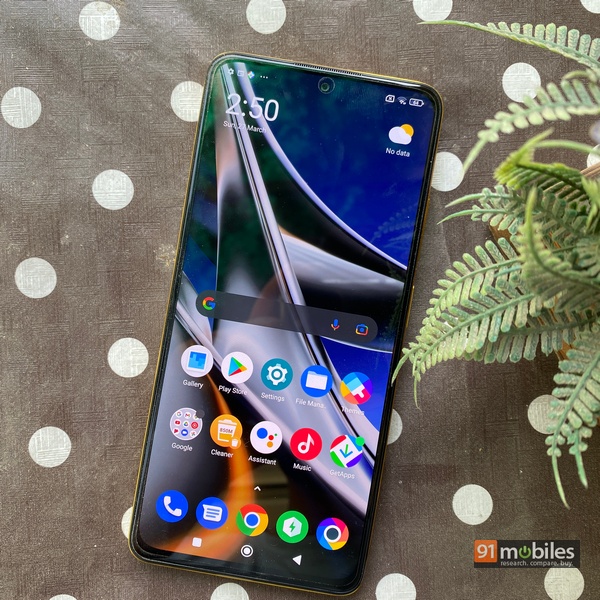
The POCO X4 Pro 5G, priced at Rs 18,999, packs in 5G, a feature missing from last year’s model. The phone also swaps the LCD panel for a more colour accurate OLED screen while retaining the smooth 120Hz refresh rate. The charging speeds have been given a bump and while the battery capacity has remained the same, POCO has trimmed down on the device’s weight significantly as compared to the X3 Pro. My only gripe, at least from looking at the specs on paper? The Qualcomm Snapdragon 695 SoC is a big departure from the near-flagship Snapdragon 860 of last year. Let’s dive into the review and check out if the POCO X4 Pro 5G is worth spending your money on.
Verdict
The POCO X4 Pro is a no-nonsense, packed to the brim smartphone with just two caveats. It has a processor that could leave mobile gamers wanting more and the device still packs in Android 11. As long as you’re okay with these, the POCO X4 Pro might just be the best choice for smartphone users on a budget of under Rs 20,000.
Design and display
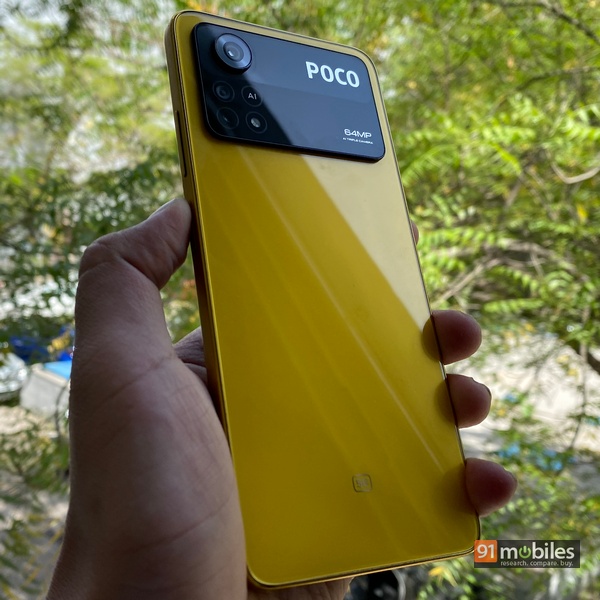
Even from a distance, the POCO X4 Pro is instantly recognisable, especially the yellow colour option that clashes quite exquisitely with the massive black camera bar at the top. The design has a striking resemblance to the POCO M3 Pro with the company’s branding distinctly present besides the large primary camera. A glass back has been employed across the back although fingerprints and smudges are surprisingly not an issue. For a more symmetric look, POCO has arranged its cameras to make it appear as if there are four sensors when in fact one of the lens circles just has the words AI embossed inside. It has been an old trick in several OEMs’ books and I still find it hard to appreciate.
The X4 Pro is definitely a thick phone with a depth of 8.1mm, though in terms of its weight, the 205g feels light enough considering the device’s massive size. POCO has provided IP53 splash and dust resistance to withstand light rains or a sweaty workout, but nothing more intense. Stereo speakers are present on the device which is per the usual standards set by POCO. While I still detest the 3.5mm headphone jack’s positioning on the top, I guess I should be thankful the feature is even there, to begin with. The rest of the phone is pretty standard with the boxy look although the uneven distribution of mass across the frame doesn’t allow the phone to stand straight without support. On the whole, I have to commend the POCO design team for churning a real eye candy of a device that is surely going to grab a ton of eyeballs while also being sturdy and well built.
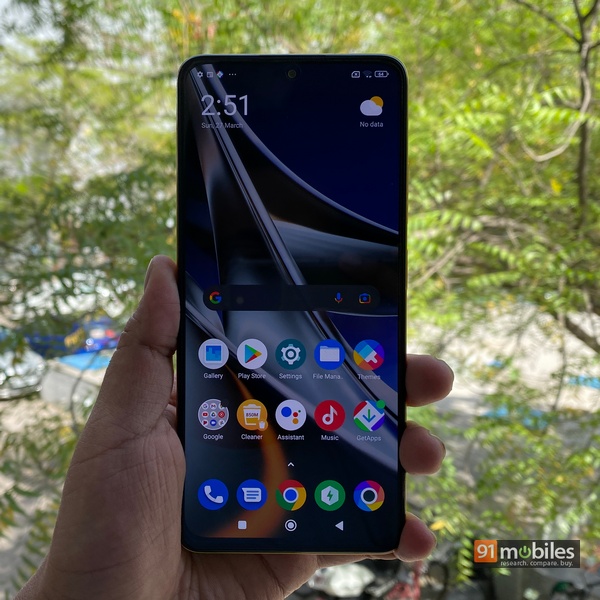
Display-wise, POCO has made huge improvements on the X4 Pro as compared to the previous iteration. As a matter of fact, it looks like the company has taken the F3 GT’s AMOLED panel and nearly pasted it as is on the X4 Pro. From the 6.67-inch size to the 120Hz refresh rate, and even the minuscule punch-hole at the top, every important display spec has been added to the POCO X4 Pro’s visual experience. At 1,200 nits, the peak brightness on the device outstrips its more expensive sibling by a factor of two. This makes the X4 Pro an absolute treat to enjoy any content no matter the lighting conditions. As for the colour palette and saturation levels, the device’s AMOLED nature allows for a much wider DCI-P3 colour gamut and excellent viewing angles.
There are the usual three profiles that are available, ie, Vivid, Saturated and Standard, all of which can be fine-tuned to the user’s liking. The deep blacks go easy on the eye and give an extra pop of vibrancy on any OTT content being consumed on the device. Speaking of which, the display shows an HDR10 certification on DRMInfo but neither Netflix nor Prime video currently supports it. For gamers, the 360Hz of touch sampling rate is more than enough for instant interaction with the touch panel. I felt that at times, the 120Hz gave a jittery feel but for the most part, it worked flawlessly.
Cameras
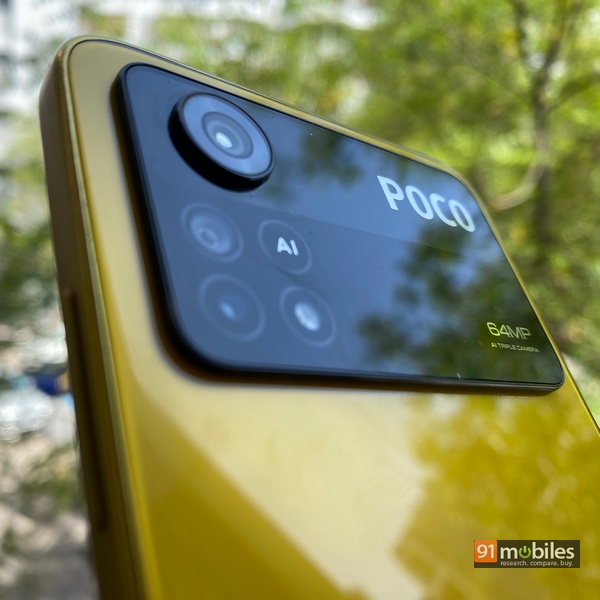
Talking now about the optics harboured inside that massive camera slab, the primary shooter is a 64MP sensor while the supporting cast includes an 8MP ultra-wide sensor and a 2MP macro shooter. On the front, the selfie camera can click 16MP photos while the video recording capabilities on the back max out at 1080p@30fps.
In terms of daylight photography, the primary sensor can churn out shots with crisp details, good dynamic range and sharp focus. The extra saturation levels in colours weren’t exactly to my taste although auto HDR kicks in to liven up a more dull looking scenario. Shutter speeds were a bit slower than I would’ve liked but that doesn’t make too much of a difference for shooting still subjects. Focusing speeds remained optimum and the sensor did not unnecessarily boost up the exposure to get details in shadowy parts of the frame. Of course, I kept the AI camera mode turned off for natural-looking shots but users who prefer more vibrancy in their pictures will find the feature quite useful. Google Lens is baked into the camera app to quickly identify and search for objects inside the viewfinder and there are several filters present as presets to get a more lively look out of photos.
The ultra-wide camera introduced a substantial amount of warping at the edges of the frame and the focus is generally soft, however, the dynamic range and colour temperatures are both decent enough. Edge detection and background blur on portrait mode worked like a charm with the camera able to separate the subject in the foreground even under challenging lighting conditions. The 2MP macro is definitely the weakest sensor on the X4 Pro’s camera layout and its low resolution means that you will probably not be using most of the pictures being clicked for any social media usage.
I was more impressed with how well the dedicated night mode worked. The viewfinder shows a grainy representation of the subject but the final image comes out way cleaner. Regular low light images are just above average and although the dedicated Night mode took its sweet time to click a photo, the end result was worth waiting for. Exposure handling was quite good with highlights defined around the subject without blowing up the background. For users who are into videography, unfortunately, there is no 60fps option for a smoother video. Finally, the selfie camera was more or less like all other front-facing sensors in the budget and mid-range category. Good with skin tones, average with facial sharpening and decent enough with background separation in portrait mode.
Performance and software
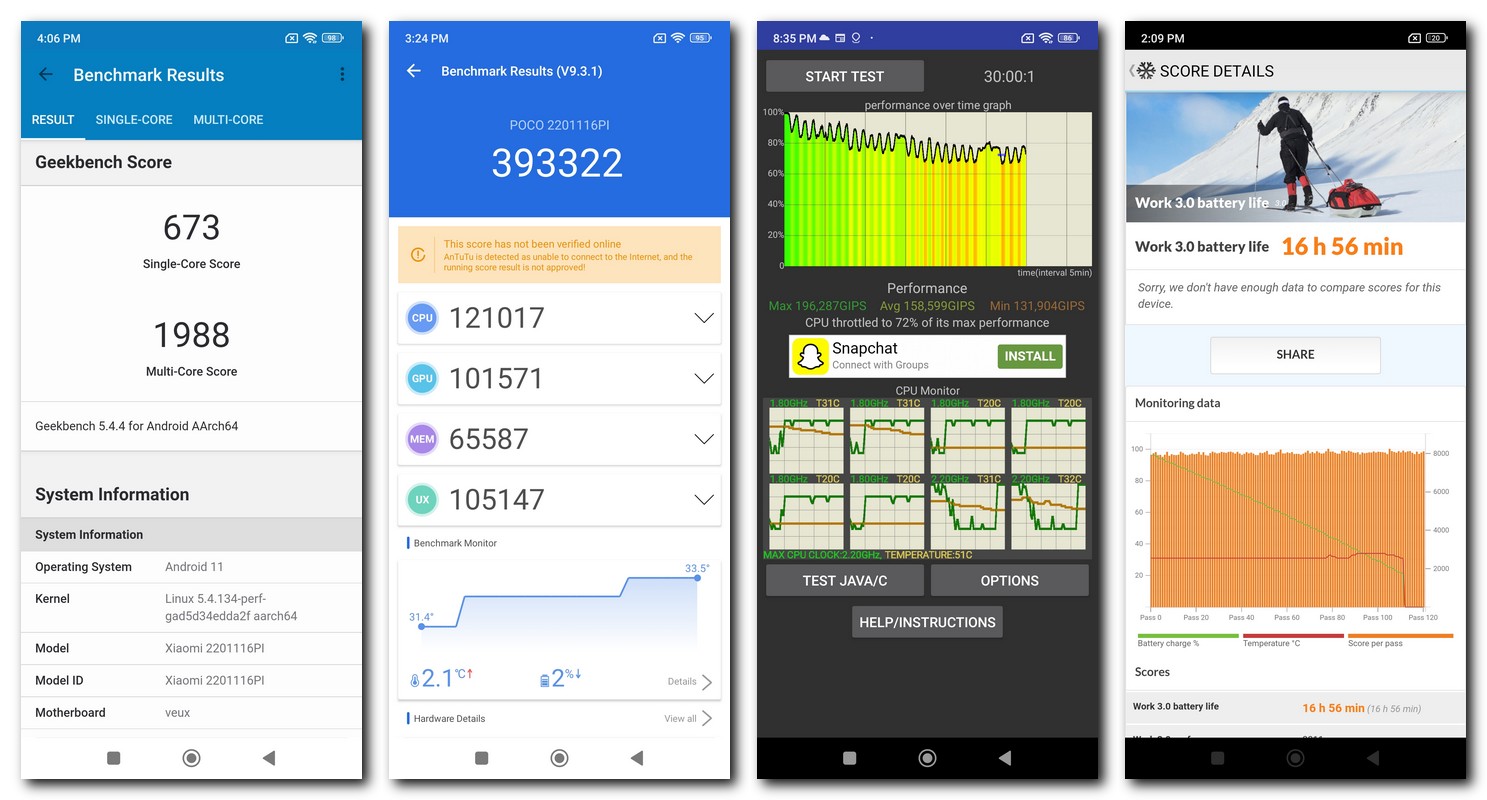
I wouldn’t say that I had a problem with the X4 Pro’s performance. For regular users not reliant on heavy multi-tasking or GPU usage, the Snapdragon 695 5G powered POCO X4 Pro is a decent phone. I was able to get through most of my day-to-day usage without a hiccup, which included running heavy social media apps side by side, along with others like Chrome, Spotify, Netflix and Telegram. Even so, the synthetic benchmark numbers appearing on the device left me wanting more. On Antutu the phone couldn’t hit the 400,000 mark and Geekbench 5’s multi-core score of 1,988 was not too great either.
Apart from that I also noticed some throttling issues on the SoC when running the CPU Throttle benchmark. For a 30 minute test with 20 threads, the Snapdragon 695 cut its peak performance to 73 percent by the end, which I feel is a bit low even for a phone of X4 Pro’s price tag. In terms of gaming, BGMI can manage only Ultra (45fps) frame rate at balanced graphics. For comparison, the Realme 9 SE 5G (review), priced almost the same, can achieve Extreme (60fps) frame rate through its Snapdragon 778 SoC. It should also come in as little surprise that last year’s POCO X3 Pro, powered by the Snapdragon 860, was also able to run the device at this frame rate setting. Other aspects of the X4 Pro’s performance are satisfactory with 6GB or 8GB of LPDDR4x memory and 128GB or 256GB of UFS 2.2 internal storage. The microSDXC card input is available for up to 1TB of extended storage but it will come at the cost of sacrificing a SIM-card slot.
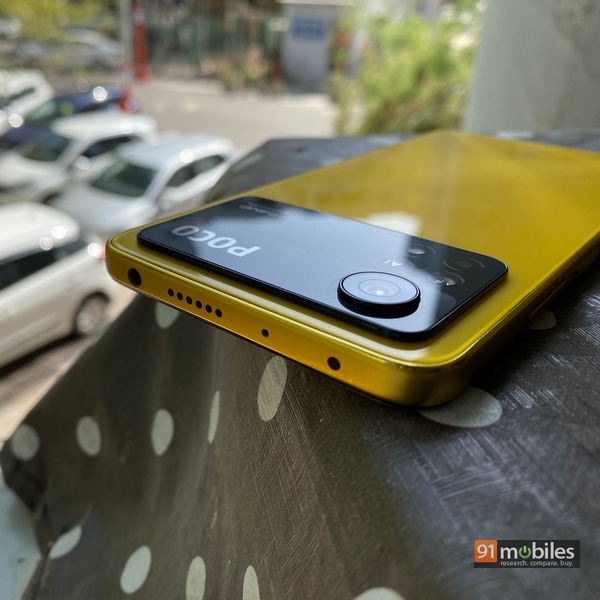
The stereo speakers on the POCO X4 Pro are very capable and sound quite rich, showing no signs of crackling up at loud volumes. A headphone jack is also present at an unconventional top position if you have wired audio inclinations. The trusty IR blaster worked most of the time with the Voltas AC in my room but only to turn it on/off. A side-mounted fingerprint sensor allows for speedy unlocking whenever I tap on it and the facial recognition doesn’t feel as useful in comparison. The chipset is 5G capable and the current signs for India’s 5G telecom infrastructure look promising enough for service to begin from next year onwards. The regular 4G LTE speeds were quite good with virtually no call drops while operating on Jio’s Noida circle. Microphone and earpiece quality were up to mark as well.
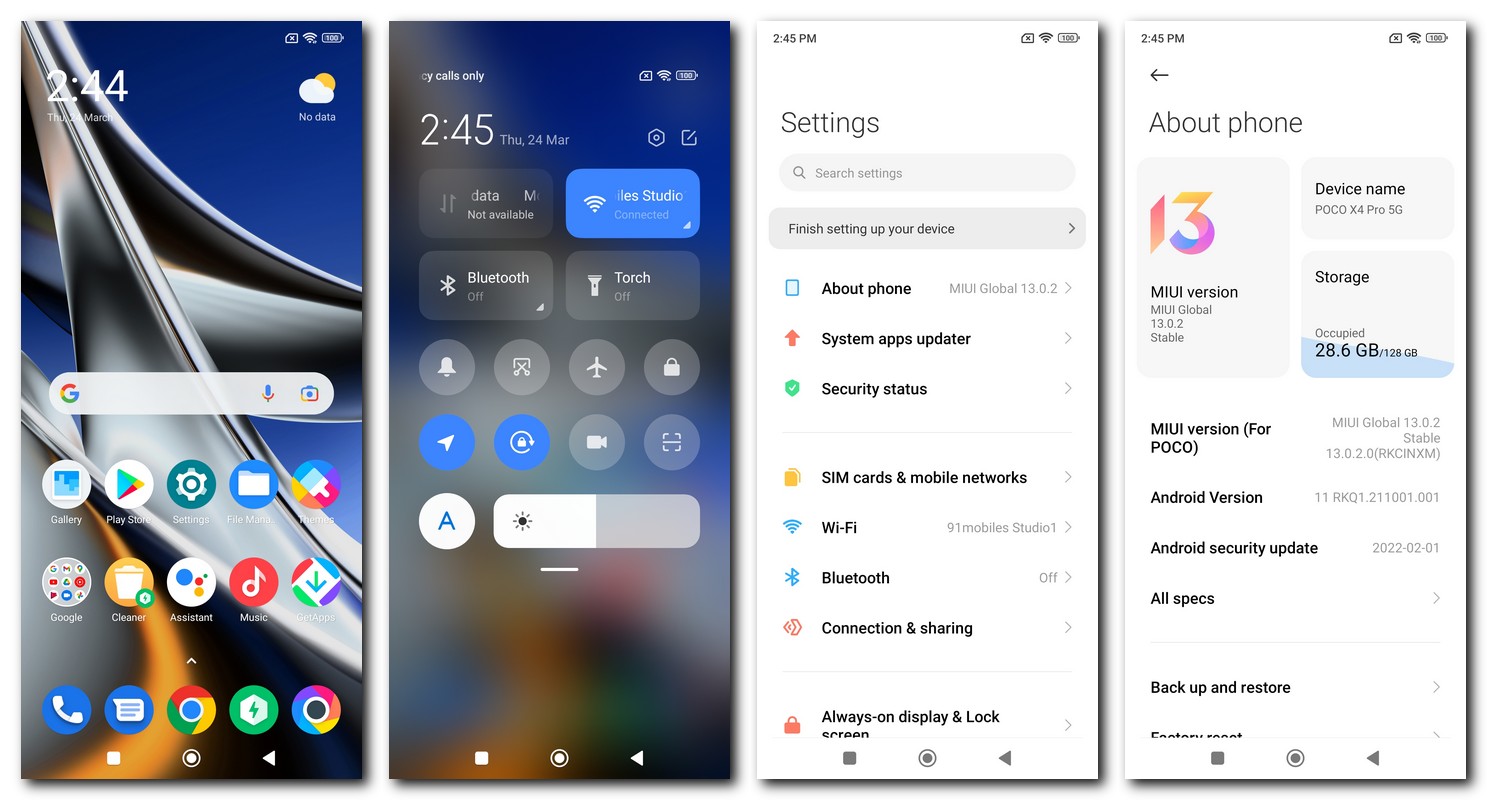
As far as software capabilities go, Xiaomi’s MIUI version number 13.0.2 is running on the X4 Pro. The issue here is that the device still operates on Android 11 when the 13th iteration is not that far off. Even so, the good news is that Xiaomi, and by extension POCO, has been quite consistent in delivering quick software updates so I do think that an upgrade to Android 12 is on the cards. Bloatware is still an issue for MIUI and I found plenty of it in the UI, although the baked-in ads plaguing the UI early on have been completely removed from the interface. I was annoyed by the constant security scanning of new apps being installed which interfered with the app I was accessing at the moment. However, this nitpicking doesn’t take away anything from the fact that MIUI now offers a much cleaner software experience as compared to previous iterations. For more details on the software, you can read my Redmi Note 11 review.
Battery
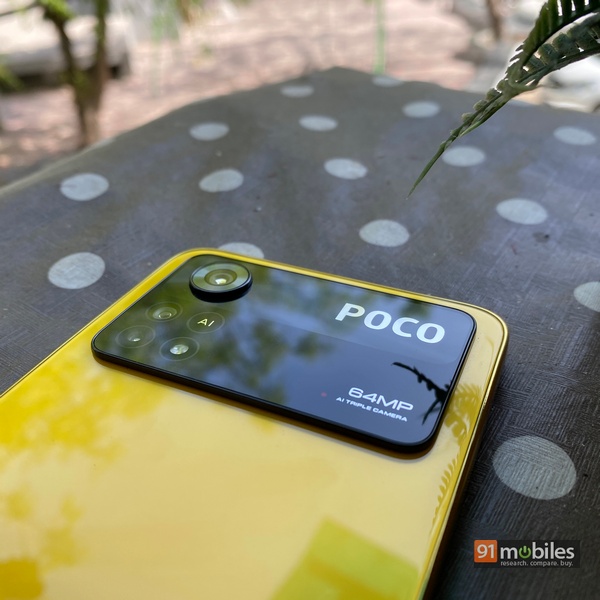
The 5,000mAh cell is ample enough for using the POCO X4 Pro easily for a day and even more on moderate usage. I got through about 2 hours of BGMI gaming and watched a few episodes of Modern Family with the battery draining to 30 percent. The PCMark Battery 3.0 benchmark yielded a very decent score of 16 hours 56 minutes, which is a tad bit higher than most phones with a 5,000mAh cell. To add to that there is the 67W fast charging that juices up the entire battery in 40 minutes or so.
Final verdict
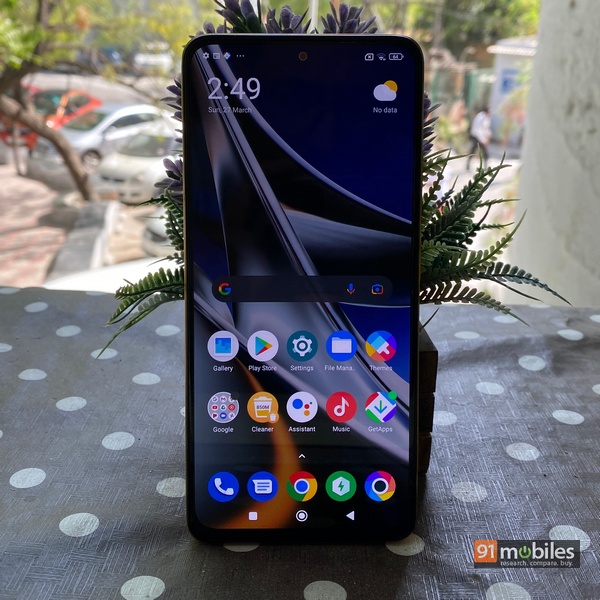
The POCO X4 Pro is almost an all-rounder and it would have been my top pick in the under 20,000 categories if the chipset used would’ve been a little bit more powerful. Not to take anything away from the rest of the hardware, which is excellent, but POCO has always been known to offer the best performance for the price. Potential power users, who might eye this device for gaming needs based on previous generations of POCO phones, might feel a tad disappointed. However, the device does look great, shoots crisp photos regardless of lighting conditions and provides a stellar visual experience. If these are things that matter to you, the POCO X4 Pro is a solid choice.
Editor’s rating: 4 / 5
Pros:
- Excellent design
- Super smooth AMOLED panel
- Great battery life
- Decent cameras
Cons:
- Performance could be better
- Still on Android 11
 Xiaomi Poco X4 Pro Xiaomi Poco X4 Pro |
vs |  Xiaomi Poco X4 Xiaomi Poco X4 |
 Xiaomi Poco X4 Pro Xiaomi Poco X4 Pro |
vs |  Xiaomi Poco X3 Pro Xiaomi Poco X3 Pro |
The post POCO X4 Pro 5G review: delivers on most aspects first appeared on 91mobiles.com.
https://ift.tt/w0PyuAa
https://ift.tt/4AnhTco



No comments